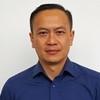Explore all the information on
Amino acids in swine nutrition
Amino acids, normally supplied by dietary protein, are required for maintenance, muscle growth, development of fetuses and supporting tissues in gestating sows, and milk production in lactating sows. Of the 22 amino acids, 12 are synthesized by the animal; the other 10 must be provided in the diet for normal growth.
The amino acids that make up proteins are conventionally classified as essential or non-essential. Essential or indispensable amino acids are not synthesized by the pig and must be supplied in the diet, whereas non-essential or dispensable amino acids are synthesized by the pig using nitrogen provided by proteins in the diet. Some amino acids are conditionally essential, amino acids with greater demand than synthesis under some conditions, i.e. depending on stage of growth, productive function, or dietary composition.
The 10 essential amino acids for pigs are: lysine, methionine, tryptophan, threonine, valine, isoleucine, leucine, arginine, histidine and phenylalanine. Dietary supply of protein must be sufficient to provide all the essential amino acids and the nitrogen required for synthesis of non-essential amino acids.
The amino acids of greatest practical importance in diet formulation (ie, those most likely to be at deficient levels) are lysine, tryptophan, threonine, and methionine. Corn, the basic grain in most swine diets, is markedly deficient in lysine and tryptophan. The other principal grains for pigs (grain sorghum, barley, and wheat) are low in lysine and threonine.
Potassium diformate (KDF) is a specifically conjugated acid double-salt, patented by ADDCON and traded as FORMI on the European and world-market. Potassium diformate has been approved in the European Union as a non-antibiotic growth promoter for use in diets for piglets, growing-finishing pigs and in sows. It was also registered as the first replacement for in-feed antibiotics world-wide. Previously, in the first part of this series, we discussed the effects of...
Comments : 0
Recommendations: 0
• The standardized ileal digestible (SID) sulfur amino acids (SAA) requirement for 10-20 kg PIC pigs was estimated to be 0.77 % to optimize ADG and 0.82 % to minimize FCR, which is approximately 29 % higher than the NRC (1998) recommendation. • The SID Lys requirement for 10-20 kg PIC pigs was estimated to be 1.35 % to minimize FCR. This estimate is approximately 25 % higher than the NRC (1998) recommendation. ...
Comments : 0
Recommendations: 2
NTRODUCTION For efficient production of animal products, the right amount of nutritionally adequate feedstuff should be supplied to the animal. All dietary components, such as energy, amino acid (AA), vitamins, and minerals are important when formulating diets for swine and poultry, however more attention should be given to the dietary energy and AA, as these components account for major cost of swine and poultry diets. A deficiency of essential AA and energy results in a...
Comments : 5
Recommendations: 14
Introduction The use of standardized ileal digestible (SID) AA has become a standard approach in diet formulation as it helps to accurately meet a pig’s requirement, and enhance the ingredient utilization. Lysine is the first limiting AA in corn and soybean meal diets for swine. In addition, Lys is used to estimate the requirement of other essential AA; which are expressed as a ratio relative to Lys. Thus, providing the appropriate level of Lys is critical to optimize...
Comments : 0
Recommendations: 0
Introduction In order to lower feed costs, crystalline AA are used routinely in swine diets to replace a portion of the soybean meal. The AA that are currently available to add to swine diets include lysine, threonine, methionine, tryptophan, and valine. The increased availability of crystalline AA sources has created the opportunity to formulate grain-based diets to the fifth or sixth limiting AA. If this can be accomplished without negatively affecting pig growth performance,...
Comments : 0
Recommendations: 0
Background After pigs are weaned from their dams, morphological and functional changes occur in their small intestine. Pluske et al. [1] reported decreased villi height and increased crypt dept. Because newly-weaned pigs are transitioned from milk to dry feed, the pig’s intestinal tract is unable to fully digest and absorb the more complex plant-based macronutrients in the feed. Various researchers [2,3] have reported that this accumulation of undigested and unabsorbed...
Comments : 0
Recommendations: 0
Introduction The increase in litter size over recent decades has reduced the uterine space available for fetal growth and development, thus reducing individual piglet birth weight. Consequently, lower birth weight reduces piglet survivability, wean weight, and market weight. However, few nutritional options have been identified to mitigate reduced birth weight. There is evidence that increasing feed intake in late gestation improves piglet birth weight (Cromwell et al.,...
Comments : 0
Recommendations: 0
Constraints to achieving precision feeding Today, feed can be formulated to an accuracy of many decimal places. This is vital for effective least cost formulation, as feed accounts for over 70 percent of animal production costs. Many factors can contribute to reducing the value of that accuracy, such as growing conditions, animal health, management and the nutritional value of feedstuffs used. Feed, therefore, is formulated to minimize...
Comments : 0
Recommendations: 4
Gut remodeling after weaning Heo et al. (2012) provide an excellent review of the gastrointestinal changes that occur in weaned pigs after weaning. As a brief summary of their review, the gastrointestinal changes at weaning include: Increased stomach gastric pH because of decreased acid secretion capacity and decreased lactic acid production due to lowered lactose intake. These changes may increase susceptibility of piglets to enteric infections at...
Comments : 0
Recommendations: 0
Introduction Protein deposition corresponds to the positive balance between protein synthesis and breakdown (Metayer et al., 2008). In an effort to maximize the protein deposition and optimize nutrient utilization in pig nutrition, it is necessary to determine the amino acid requirement for protein deposition in each growth stage. Lysine has been an amino acid of great interest due to its constancy in body protein and its metabolic preferential allocation for the deposition of...
Comments : 0
Recommendations: 0
Introduction Feed represents between 60 and 70 % of the total cost of pork production in modern capital-intensive systems. Within feed, energy alone may represent 50 % or more of the total cost [1]. Carbon-containing compounds in the feed, including fat, carbohydrate and protein, release energy when oxidized. Such energy is required for such processes as the biosynthesis of proteins, bones and lipids, for biochemical processes associated with maintenance, for active ion...
Comments : 0
Recommendations: 2
Unfortunately, the roles of amino acid (AA) in nutrition and metabolism have long been neglected, until the conclusion that the AA glutamine is important for intestinal mucosal integrity and AA arginine is a prerequisite for maximum embryonic development and optimum neonatal growth (Wu, 2010). Traditionally, Amino acids (AA) were classified as nutritionally essential or nonessential for animals and humans based on nitrogen balance or growth. Nutritionally essential AA (EAA) or...
Comments : 0
Recommendations: 2
Background Extremely high price of fish meal and whey protein concentrate increases overall cost of pork production. Because of advances in biotechnology, the use of supplemental amino acids in animal feeding are extended to Lys, Met, Thr, Trp, Val, Gln, and possibly Ile. Utilization of these essential amino acids as feed additives benefits swine industry by allowing nutritionists...
Comments : 1
Recommendations: 2
Introduction Fiber is a usual component in the pig diet and when included within reasonable levels, it promotes normal gastrointestinal tract function (Wenk, 2001). On the other hand, the negative effect of dietary fiber on energy and nutrient utilization is dependent on its physical and chemical properties which differ among feedstuffs (Lenis et al., 1996). Cereal grains...
Comments : 1
Recommendations: 0
Introduction. Over the 20 last years, the increase in sow’s prolificacy has been associated with a decrease in average birth weight and an increase in within-litter variation of individual birth weight (Quiniou et al., 2002). At the same time, milk potential increased but not appetite, which resulted in more important...
Comments : 0
Recommendations: 1
Amino acids (AA) are the organic compounds made from amine (-NH 2 ) and carboxylic acid (-COOH) functional groups, along with a side-chain specific to each amino acid. The key elements of an amino acid are carbon, hydrogen, oxygen, and nitrogen, though other elements are found in the side-chains of certain amino acids (Fig. 1). Fig. 1: ...
Comments : 1
Recommendations: 0
Introduction
The non-starch polysaccharide content of corn-derived distiller dried gains with soluble (DDGS) is 3-4 times higher compared to corn. Some of the anti-nutritional effects of its high fiber content may be ameliorated with the supplementation of carbohydrases. Our objective was to measure in pigs increases in amino acid (AA) digestibility and energy utilization in a diet with high inclusion of DDGS and...
Comments : 1
Recommendations: 0
Introduction
Infection is known to reduce the productive performance of animals. Pathogen-induce immune activation causes fever and reduces protein synthesis rates in skeletal muscle among other symptoms. In the gut, pathogens can cause diarrhea but its effect on nutrient digestibility is unknown. Our objective was to quantify dynamic changes in amino acid (AA) digestibility and endogenous nitrogen losses (ENL) during...
Comments : 0
Recommendations: 0
Introduction
Heat treatment of soybean meal (SBM) causes amino acid (AA) damage, particularly to lysine. Further, birds and pigs cannot use heat-damaged AA for growth. Lysine is the first- and second- limiting AA in corn-soybean meal diets for pigs and poultry, respectively. Currently, there is no reliable laboratory analysis for the determination of digestible lysine in soybean meal. The objective of this study was to...
Comments : 0
Recommendations: 0
The word protein is derived from the Greek proteios, meaning primary or foremost. This is fitting in that proteins, being the molecular instruments through which genetic information is expressed (one gene – one enzyme), are central to the life process. There is a huge diversity of proteins. The key to the structure of different proteins is the group of relatively simple building block molecules, the amino acids. It is indeed remarkable that the cell can join what is a relatively small...
Comments : 0
Recommendations: 0



.jpg&w=3840&q=75)



.jpg&w=3840&q=75)


















